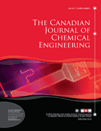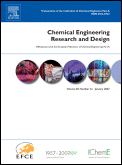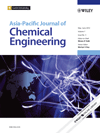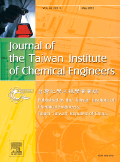
CHEMICAL AND BIOCHEMICAL ENGINEERING QUARTERLY
Scope & Guideline
Innovating Processes, Transforming Industries
Introduction
Aims and Scopes
- Chemical Reaction Engineering:
Research related to the design, optimization, and understanding of chemical reactors and processes, including kinetic studies, modeling, and optimization techniques. - Biochemical Engineering and Biotechnology:
Studies involving the application of biochemical processes, including fermentation, enzyme technology, and bioremediation, aimed at sustainable development and resource recovery. - Separation Processes and Material Recovery:
Innovative approaches in separation technologies, including adsorption, extraction, and membrane processes, focusing on resource recovery from waste and environmental remediation. - Nanotechnology and Advanced Materials:
Research on the synthesis and application of nanomaterials in various chemical and biochemical processes, highlighting their unique properties and potential applications. - Sustainable Process Design and Circular Economy:
Focus on developing sustainable engineering solutions, including waste valorization, energy recovery, and closed-loop systems that minimize environmental impact. - Computational Modeling and Simulation:
Utilization of computational techniques to model and simulate chemical and biochemical processes, enhancing understanding and optimization of complex systems.
Trending and Emerging
- Green Chemistry and Sustainable Practices:
There is a notable increase in research dedicated to green chemistry principles, emphasizing sustainable practices and eco-friendly processes to minimize environmental impact. - Microalgae and Bioprocessing:
Research on microalgae for bioprocessing applications, including wastewater treatment and biofuel production, has gained momentum, highlighting the potential of microalgae in sustainable engineering. - Advanced Adsorption Techniques:
Emerging studies focus on novel adsorbents and advanced adsorption techniques for pollutant removal, driven by the need for effective water treatment solutions. - Integration of AI and Machine Learning in Process Optimization:
There is an increasing trend towards incorporating artificial intelligence and machine learning in process design and optimization, showcasing the journal's commitment to modern technological advancements. - Functional Nanomaterials for Environmental Applications:
Research on the synthesis and application of functional nanomaterials for environmental remediation and energy applications is on the rise, reflecting the growing interest in nanotechnology.
Declining or Waning
- Traditional Chemical Process Optimization:
There has been a noticeable decrease in studies focused solely on traditional chemical process optimization without considering sustainability or biotechnological advancements, as the field increasingly embraces integrated approaches. - Conventional Wastewater Treatment Techniques:
Research centered on conventional wastewater treatment methods appears to be declining, as innovative and more efficient biotechnological and physicochemical methods gain prominence. - Basic Material Characterization:
Studies that focus solely on basic characterization of materials without application-driven contexts have diminished, as there is a stronger emphasis on application and functionalization in recent publications. - Single-Component Reaction Studies:
Research focusing on single-component reactions without exploring synergistic effects or complex systems has become less common, reflecting a trend toward more integrated and holistic approaches.
Similar Journals

CANADIAN JOURNAL OF CHEMICAL ENGINEERING
Exploring Innovations in Chemical EngineeringCanadian Journal of Chemical Engineering, published by Wiley, stands as a pivotal platform in the field of chemical engineering, addressing a myriad of topics essential for researchers, professionals, and students alike. With ISSN 0008-4034 and E-ISSN 1939-019X, this journal has been a cornerstone of chemical engineering scholarship since its inception in 1958 and continues to provide valuable insights through its rigorous peer-reviewed articles. The journal is ranked in the Q2 category of the Scopus quartile rankings, reflecting its influence and relevance within the chemical engineering community, with a notable position of #137 out of 273 in the general chemical engineering field. Although it does not offer open access options, its comprehensive coverage of contemporary research and applications solidifies its status as a vital resource for advancing knowledge and innovation in chemical engineering.

CHEMICAL ENGINEERING RESEARCH & DESIGN
Transforming Ideas into Engineering Masterpieces.CHEMICAL ENGINEERING RESEARCH & DESIGN is a prestigious journal that has been at the forefront of dissemination in the fields of chemical engineering and general chemistry since its inception in 1983. Published by Elsevier, the journal features a rich array of research articles that contribute to both theoretical and practical advancements in the discipline. With an impact factor that positions it strongly within the Q2 quartile for both Chemical Engineering and Chemistry categories, it occupies an esteemed place in the academic community, being ranked #77 out of 273 in Chemical Engineering and #111 out of 408 in General Chemistry on Scopus. Researchers and professionals will find it an invaluable resource for cutting-edge research and innovative methodologies that shape the future of chemical engineering applications. While the journal does not currently offer open access, it remains accessible through institutional subscriptions, ensuring that important findings continue to reach a broad audience. With a scope that is poised to expand through 2024, the journal aims to foster collaboration and knowledge sharing, supporting the continuous evolution of the field.

Asia-Pacific Journal of Chemical Engineering
Fostering Interdisciplinary Research for a Sustainable Future.The Asia-Pacific Journal of Chemical Engineering, published by WILEY, serves as a vital forum for the dissemination of innovative research in the interdisciplinary domains of chemical engineering, renewable energy, sustainability, and waste management. Established in 2006, this esteemed journal has achieved a notable impact factor that reflects its commitment to advancing knowledge and practices within the chemical engineering community. With its Q3 category rankings across various fields, including Chemical Engineering (Miscellaneous), Renewable Energy, Sustainability and the Environment, and Waste Management and Disposal, the journal holds a significant position among its peers, assuring readers of quality and relevance in published content. Although it does not offer Open Access options, the Asia-Pacific Journal of Chemical Engineering remains an essential resource for researchers, professionals, and students aiming to stay at the forefront of innovations affecting the Asia-Pacific region and beyond. The journal's broad scope covers diverse topics, making it an integral part of the academic landscape from 2006 to 2024.

Chemical Engineering Journal Advances
Exploring New Horizons in Chemical Engineering Innovation.Chemical Engineering Journal Advances, published by Elsevier, is a premier open-access journal dedicated to advancing research and innovation in the field of chemical engineering. With its inception in 2020, the journal has quickly established itself as a key player in disseminating high-quality, peer-reviewed articles, boasting an impressive Q1 ranking in Chemical Engineering and related disciplines for 2023. The journal covers a broad spectrum of topics, including industrial processes, environmental chemistry, and innovative manufacturing techniques, making it essential reading for researchers and professionals aiming to stay at the forefront of chemical engineering advancements. With its commitment to open access, Chemical Engineering Journal Advances ensures that groundbreaking research is readily available to the global scientific community, fostering collaboration and knowledge exchange. Situated in the Netherlands, the journal supports its authors with a robust platform for impactful research dissemination, highlighted by a solid position in the Scopus ranks, indicating its influence and relevance in the field.

CHEMIE INGENIEUR TECHNIK
Exploring the Intersection of Chemistry and Engineering.CHEMIE INGENIEUR TECHNIK, published by WILEY-V C H VERLAG GMBH, stands as a significant academic journal in the fields of Chemical Engineering, Chemistry, and Industrial and Manufacturing Engineering. With an ISSN of 0009-286X and an E-ISSN of 1522-2640, this esteemed journal has been contributing to the body of knowledge since 1949 and plans to continue its legacy until 2024. Notably, the journal holds a Q2 quartile ranking in 2023 across various categories, illustrating its recognized impact and relevance within the scientific community, with Scopus ranks indicating it falls within the top 60th to 51st percentiles of its respective fields. Although currently not open access, CHEMIE INGENIEUR TECHNIK provides readers with comprehensive insights into contemporary research, technological advancements, and practical applications, making it an essential resource for researchers, professionals, and students who are keen to stay abreast of developments in chemical processes and engineering advancements.

ACS ES&T Engineering
Transforming Research into Real-World Solutions for Global Challenges.ACS ES&T Engineering, published by the American Chemical Society, stands as a leading journal in the realm of Chemical Engineering, Environmental Chemistry, and related fields, with a notable Impact Factor indicative of its scholarly influence. Emerging from 2021 with a vision to address contemporary challenges in engineering and environmental health, this Journal not only covers critical studies in Chemical Engineering but also excels in areas such as Process Chemistry and Technology, aligning with its Q1 status across several categories in 2023. With exceptional rankings in Scopus, including a percentile rank in the 90th for Chemical Health and Safety, it offers a significant platform for researchers, educators, and practitioners to disseminate innovative research and practices. Although the journal maintains a subscription model, its commitment to rigorous peer review and high-quality content ensures that readers gain access to pivotal findings essential for advancing knowledge and practice in a rapidly evolving scientific landscape. For those dedicated to tackling global engineering challenges, ACS ES&T Engineering is an invaluable resource.

KAGAKU KOGAKU RONBUNSHU
Unveiling New Horizons in Chemical Processes and MaterialsKAGAKU KOGAKU RONBUNSHU is a distinguished journal published by the SOC CHEMICAL ENG JAPAN, focusing on the interdisciplinary realms of chemical engineering and chemistry since its inception in 1975. With a commitment to advancing knowledge in these fields, the journal has established itself as a critical forum for researchers, professionals, and students alike, contributing to the understanding and application of chemical processes and materials sciences. Although it operates under a traditional publication model, the journal garners attention within the academic community, reflected in its Q3 rankings in both Chemical Engineering and Chemistry categories as of 2023. With the journal's ISSN 0386-216X and a comprehensive coverage spanning nearly five decades, it remains an essential resource for contemporary chemical research and developments, addressing ongoing challenges and innovative solutions in various applications. The journal invites submissions that reflect the latest advancements and insights in these fields, striving to foster a vibrant academic dialogue and support future innovations.

THEORETICAL FOUNDATIONS OF CHEMICAL ENGINEERING
Elevating the Standards of Theoretical Chemical ResearchTHEORETICAL FOUNDATIONS OF CHEMICAL ENGINEERING is an esteemed academic journal published by PLEIADES PUBLISHING INC, dedicated to advancing the field of chemical engineering and chemistry through rigorous theoretical discourse and scholarly communication. With a history of publication dating back to 1974, the journal has been a vital resource for researchers and professionals, contributing to the foundation of knowledge in this multidisciplinary domain. Although it does not offer open-access options, it remains an essential platform for innovative research, boasting a 2023 ranking in the Q3 quartile for both Chemical Engineering and General Chemistry categories. The journal is indexed in Scopus, where it ranks #210 out of 273 in Chemical Engineering and #317 out of 408 in Chemistry, emphasizing its growing relevance within the scholarly community. Researchers, educators, and students alike can benefit from the insights and findings shared within its pages, making it a critical venue for those seeking to enhance their expertise in theoretical chemical engineering.

Frontiers of Chemical Science and Engineering
Driving Breakthroughs in Environmental SustainabilityFrontiers of Chemical Science and Engineering is an esteemed journal published by SPRINGER, dedicated to advancing the rapidly evolving domain of chemical engineering. Located in New York, USA, this journal provides a vibrant platform for disseminating groundbreaking research and innovative methodologies in the field. With an impressive Q1 ranking in Chemical Engineering and a Scopus ranking of 54 out of 273, it occupies a prominent position, reflecting its high impact and relevance among academic circles. Since its inception in 2011, it has fostered interdisciplinary collaboration, encompassing diverse topics such as process engineering, environmental sustainability, and nanotechnology, making it a vital resource for researchers, professionals, and students alike. The journal's open access policy further enhances accessibility, ensuring that cutting-edge research is readily available to a global audience. As the field continues to evolve, contributions to Frontiers of Chemical Science and Engineering play an essential role in shaping future advancements and empowering the next generation of engineers.

Journal of the Taiwan Institute of Chemical Engineers
Cutting-edge insights for a sustainable future in chemistry.The Journal of the Taiwan Institute of Chemical Engineers is a prestigious publication in the field of chemical engineering and chemistry, published by Elsevier. With an impressive impact factor placing it in the top quartiles (Q1) of both the Chemical Engineering (miscellaneous) and Chemistry (miscellaneous) categories, this journal serves as a vital platform for disseminating cutting-edge research and innovative findings. Since its inception in 2009 and continuing through 2024, it has established a strong reputation with notable Scopus rankings—ranked 40th out of 273 in General Chemical Engineering and 62nd out of 408 in General Chemistry, reflecting the journal’s significance in its field. By offering open access options, the journal ensures that research is readily available to a global audience, fostering collaboration and knowledge exchange among researchers, professionals, and students. The Journal of the Taiwan Institute of Chemical Engineers is dedicated to advancing the discipline of chemical engineering and supporting the development of novel scientific methodologies and applications.